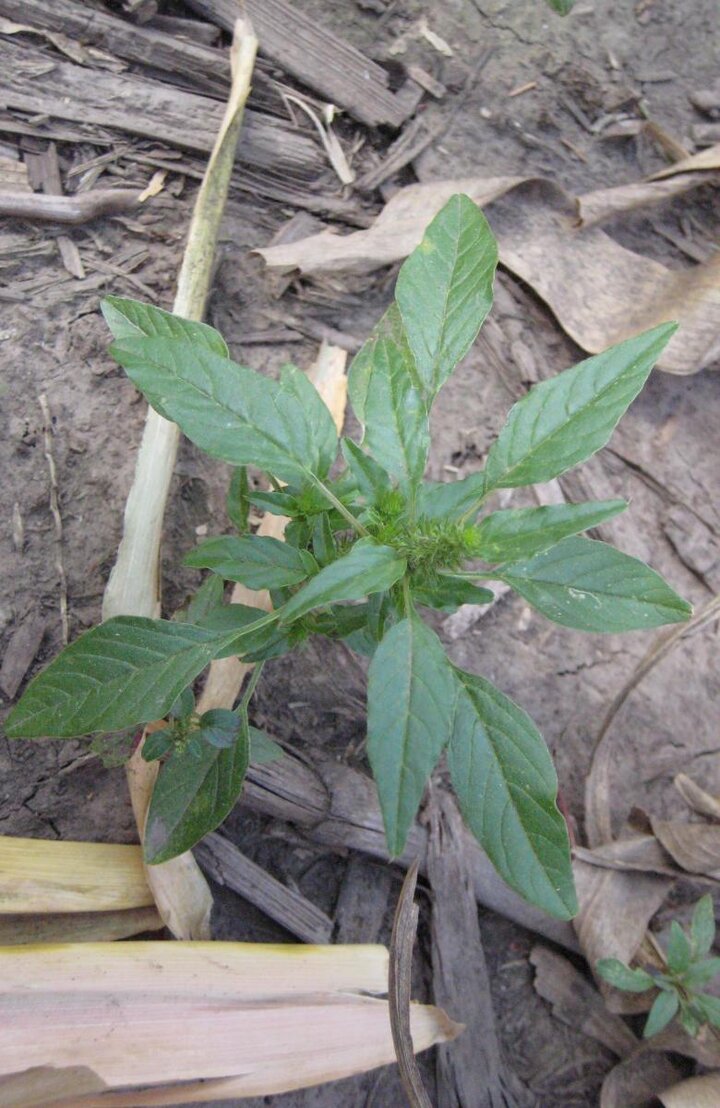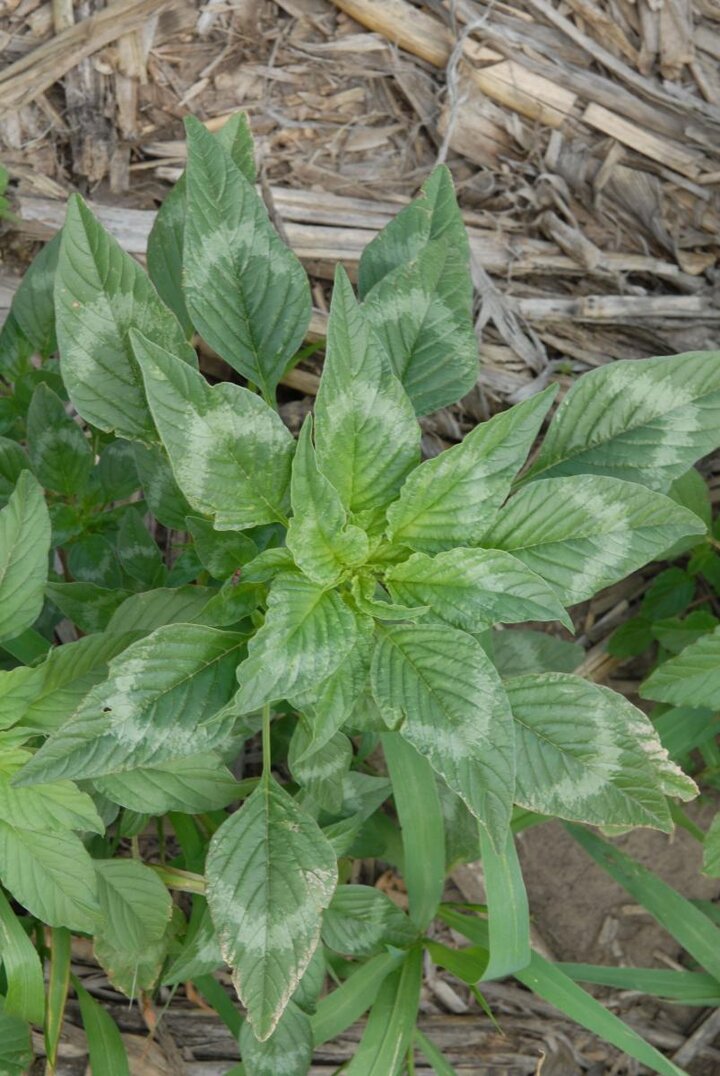Palmer amaranth (Amaranthus palmeri S. Watson) is a summer annual broadleaf weed of the Amaranthaceae (pigweed) family. Though it is native to the southwestern United States, human activities including seed and equipment transportation, and agriculture expansion have spread Palmer amaranth to the northern United States. Palmer amaranth is a relatively new weed in Nebraska.
Historically, common weeds from the pigweed family reported in Nebraska are tumble pigweed (Amaranthus albus L.), prostrate pigweed (Amaranthus graecizans L.), redroot pigweed (Amaranthus retroflexus L.), and common waterhemp (Amaranthus rudis Sauer). They are usually found throughout Nebraska in dry prairies, cultivated and fallow fields, roadsides, and industrial and waste areas.
Palmer amaranth is a prolific seed producer. For example, a single female plant, if not controlled, can produce as many as 600,000 seeds (Figure 1). Palmer amaranth has a high water-use efficiency and the greatest plant dry weight, leaf area, growth rate of any pigweed. Aggressive growth habit and prolific seed production make Palmer amaranth a pervasive weed in Nebraska crop production fields. Glyphosate-resistant Palmer amaranth has been reported in west central and southcentral Nebraska.
Palmer amaranth has also been identified in several Iowa counties, primarily in conservation reserve program (CRP) fields. In fact, a bill adding Palmer amaranth to Iowa’s noxious weed law was signed by Governor Branstad on April 21 and will go into effect July 1. Palmer amaranth is already listed as a noxious weed in Delaware, Minnesota, and Ohio.
To date, Palmer amaranth has not been confirmed in conservation plantings in Nebraska. The identification and occurrence of Palmer amaranth in CRP fields in Iowa has raised concerns among weed scientists and growers about its spread into conservation plantings in Nebraska. Seed mixes purchased from several seed producers have been the primary source of Palmer amaranth seeds in conservation plantings in Iowa. Additionally, palmer amaranth seeds can disperse through equipment, birds, animals, or human activities.
Conservation Reserve Program
The Conservation Reserve Program (CRP) administered by the Farm Service Agency (FSA) is considered to be the largest private-lands conservation program in the United States with a total of 23.8 million acres. The program offers an annual rental payment and cost-sharing to land owners who agree to establish beneficial plant species on their land.
As of December 2016, the USDA Farm Service Agency reported 800,131 CRP acres in Nebraska with 543,327 of those acres in “general sign-ups” where land is accepted into the program on a competitive basis using an environmental benefits index. The components of this index can vary over time and can be based on factors such as wildlife habitat, water quality, soil-retention, and air quality benefits. The remaining 256,804 acres are non-competitive acres that meet eligibility practices such as wetland buffers, filter strips, grass waterways, etc. To learn more about these programs visit the USDA FSA website.
The Conservation Reserve Program (CRP) began in 1986 in Nebraska with a peak enrollment in 1993 of 1.4 million acres. According to the FSA, continuous acres have been on a steady incline since 2001 whereas general CRP acres have been declining in Nebraska since 2007.
CRP acres fluctuate on an annual basis with 5%-8% of contracted acres expected to expire each year. Expiring CRP acres are potentially eligible for renewal or new enrollments. In 2016, 1.8 million acres were submitted by farmers for general sign-up with only 410,000 of these acres being accepted.

Figure 2. Cotyledon leaves of Palmer amaranth.
Figure 3. Palmer amaranth has alternate leaves.
Figure 4. Leaves of Palmer amaranth sometimes have white or purple chevrons.
(Inset)



